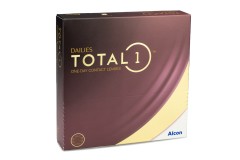Online eye test: Check your eyesight for free now

The World Health Organization estimates that approximately 2.2 billion people live with some form of vision impairment.1 So how do you find out if your eyes need help? And how do you measure your own eyesight? This article will provide you with a good starting point.
A brief history of eye charts
The inventor typically credited with creating the first eye chart is German ophthalmologist Heinrich Küchler around 1835. Dutch eye doctor Herman Snellen later developed a chart in 1862 that standardized Küchler's design of progressively smaller text. The early Snellen charts used symbols, but eventually evolved to incorporate specifically shaped letters. Snellen charts with slight variations would go on to became the norm and are still used today to measure eyesight.2 During an eye exam with a Snellen chart, your eye doctor will ask you to read the smallest line of letters you can. Put plainly, if you're able to read the bottom row of letters, your visual acuity is excellent.
Take an eye test here
If you want to find out whether you need glasses or contact lenses, you should book an eye test with your local eye care practitioner. Before visiting a professional, you can try our online eye chart, which may give you an initial indication whether or not you have issues with distance vision.
Please note: This chart is not a substitute for an actual eye exam performed by a medical professional. This chart is half the size of a regular Snellen chart and is designed to fit on one sheet of A4 paper for easy home printing. Due to ocular accommodation, in which your eyes can adjust to visual weaknesses at 5 metres/16 feet and under, the results from 3 metres/10 feet are not as accurate as those based on a larger chart from the official medical distance of 6 metres/20 feet.
The test we're providing here is only for testing nearsightedness, which means blurry distance vision. Farsightedness, astigmatism and other eye problems can't be measured with our chart. Only a comprehensive eye examination by a licensed optometrist can determine whether your eyes are healthy and you can see as clearly and comfortably as possible.
How to use our online Snellen eye chart
- Print the chart on a piece of A4 paper with print scale set to 100%.
- Place the chart on a wall and stand 3 metres/10 feet away.
- Cover one eye and read the letters on the chart from top to bottom.
- Repeat with the other eye, and then with both eyes together.
- The smallest row of letters that you read accurately determines visual acuity in the uncovered eye.
How to interpret your results
The results of your chart reading will determine the quality of your eyesight. Your results will be expressed as a fraction based on traditional-sized chart measurements. Fractions are shown to the left of each row and identify how well you can see. For example:
- 20/20 vision: If you can read clearly to the ninth line, your vision is 20/20. This means you can read the same line of letters at 20 feet/6.09 metres that people with normal vision can read at 20 feet/6.09 metres.Your vision is considered ideal by medical standards.
- 20/40 vision: If you can read clearly to the sixth line, your vision is 20/40. This means you can read the same line of letters at 20 feet/6.09 metres that people with normal vision can read at 40 feet/12.2 metres. The 20/40 line is the standard cutoff point for needing corrective lenses. If this line cannot be read, then vision correction is typically prescribed.
Catching vision issues early on and raising awareness can help create a clearer world for everyone. Here’s to healthy eyes!
Sources
1. The World Health Organization, Blindness and visual impairment
2. The National Library of Medicine, Evaluation of Visual Acuity









Comments